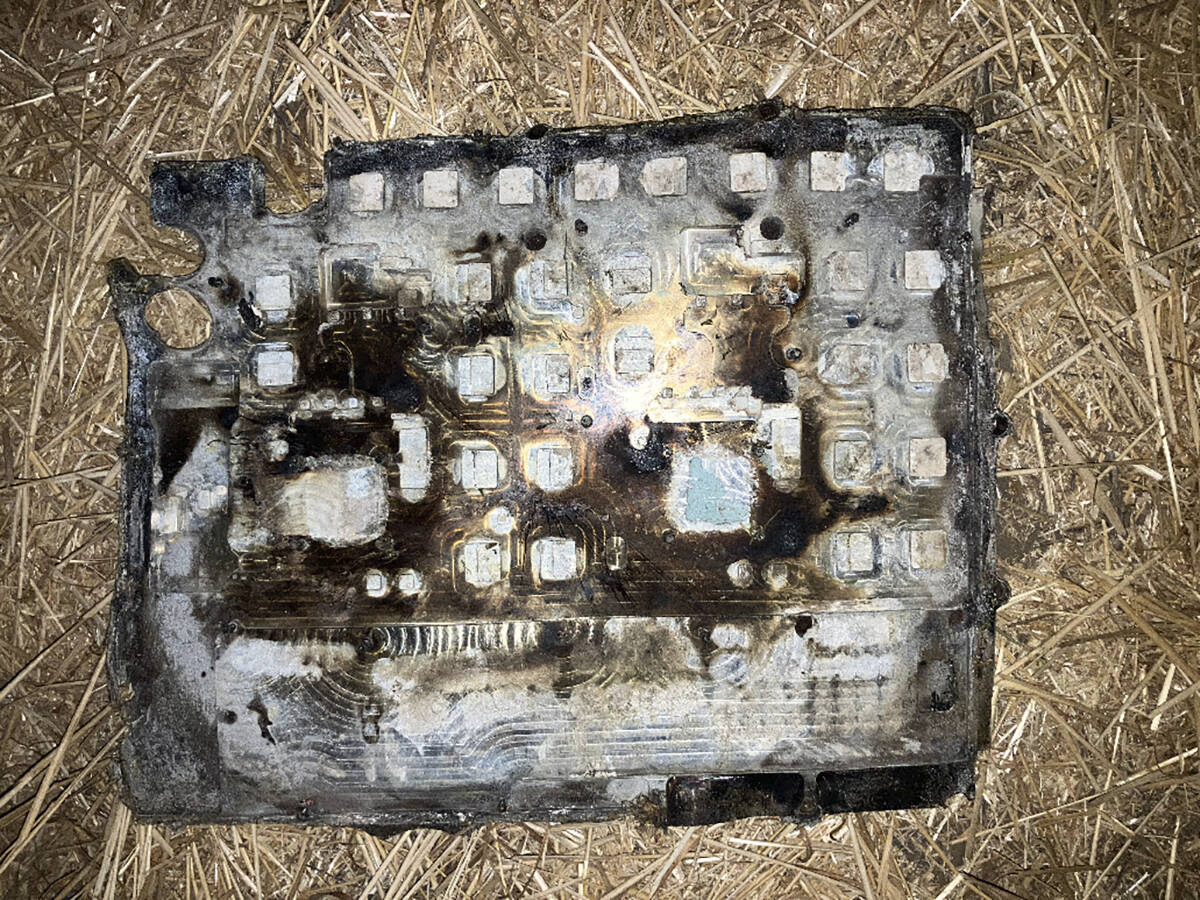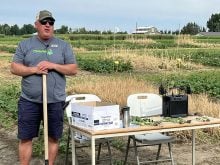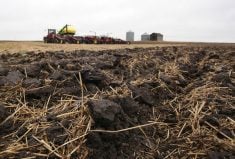Some types of chemicals can leach from fertilizers made from recycled waste with the help of microbial decomposition
The problem with forever chemicals is exactly that — they don’t go away and they persist in the environment.
Now, researchers at Drexel University in Philadelphia have found that soil microbes appear to support the release of these chemicals, known as per- and polyfluoroalkyl substances (PFAS), into the environment and across croplands.
“What happens is that these micro-organisms can actually convert those mobile PFAS and help make them more mobile,” said Christopher Sales, associate professor in the College of Engineering. “The microbes turn the chemicals into ones that are really hard to degrade.”
Read Also

Farmers asked to keep an eye out for space junk
Farmers and landowners east of Saskatoon are asked to watch for possible debris in their fields after the re-entry of a satellite in late September.
PFAS are a large family of man-made fluorinated organic chemicals that have been widely used in industry and consumer products for 60 years. They can be found in hundreds of products including stain- and water-resistant fabrics and carpeting, cleaning products, paints, firefighting foams, non-stick cookware and rain gear. They are used in the aerospace, automotive, construction and electronics industries. They resist degradation, accumulate in the environment and are soluble in water.
They pose potential health hazards, such as increased cholesterol levels, hormone disruption, impacts on the immune system and developmental delays in children.
Past studies from the U.S. Centers for Disease Control and Prevention have estimated that PFAS chemicals could likely be detected in the blood of 98 percent of Americans.
The research has now shown that PFAS can leach from fertilizers made from recycled waste with the help of microbial decomposition. This leads to the further spread of PFAS in soil, groundwater and crops.
The report stated that land application of biosolids has been a potential source of pollution to crops, soils and groundwater because of a range of contaminants including metals and PCBs. Once land-applied, PFAS are exposed to environmental conditions that may impact microbial activities. PFAS accumulations in the soil can be taken up by plants while leaching into groundwater.
At the same time, PFAS may continue to be transformed through ongoing microbial activity, contributing to the mobility and distribution of the compounds.
According to a news release, the U.S. Environmental Protection Agency has assessed that about half of all sewage waste in the U.S., some 4.5 million tonnes, is treated and then converted to biosolid waste. Half of that is subject to further treatment and then converted into fertilizer, which is spread on farmland, gardens and landscaped areas.
“PFAS can not only accumulate in crops but also in fields,” said Sales. “Pastures are often fertilized with biosolids. PFAS can make its way into milk from cows grazing on the grass. We end up consuming the milk (or milk products). It then recycles into the sewage system and back into the environment in an endless circle.”
He said microbes exist in biosolid sludge even after stabilization treatment processes. They play a role in the decomposition of organic compounds, such as fats and proteins. The goal of the research was to examine the microbial “weathering” of the organic materials to see how it impacts PFAS leaching from biosolids over time because the chemicals are thought to stick to organic compounds.
The team collected biosolid samples that had been treated through aerobic digestion, anaerobic digestion or composting. The content of each sample was tested to assess the level of organic matter, proteins, fats and the concentration of PFAS. They were then put in an environmentally controlled chamber for three months to watch for indicators of microbial activity and any breakdown of organics, lipids and proteins. The researchers also monitored the samples to see how microbial activity affected how much PFAS separated from the biosolids into water.
According to the report, they found that the most rapid level of microbial weathering occurred in the first 10 days of the study. In addition, the highest level of protein, fat and organic matter removal occurred in the same amount of time. The samples with the highest level of microbial activity also showed the highest level of PFAS separation and spread. That indicated that the biosolid sludge would be more susceptible to PFAS leaching since the role of the microbes in breaking down the organic matter essentially allows the PFAS to fan out.
“Going forward, our research related to PFAS is very multi-faceted,” said Sales. “We are working to see how PFAS, once in the environment, accumulates at all food web levels. I also have a project working with core plasma, a non-thermal plasma. It’s like an electrical discharge that makes ionized gas and we are trying to see how we can use that as a way to destroy PFAS in water and soil.”
He said that there is a considerable amount of money being invested in finding ways to destroy PFAS and that a lot of research is ongoing in what is referred to as “destructive technology”.
He said PFAS could be destroyed if they are exposed to very high temperatures. However, that is not possible in a real-farm situation because the necessary temperatures are too high.
“We have some research on the use of PFAS in firefighting foam. This foam is used at airports and military bases for firefighting training and a lot of it can get into the environment. The research we’re working on is to see how PFAS, once in the environment, accumulates at all food web levels in aquatic ecosystems from worms and invertebrates to fish.”
Further studies will consider the rate of biosolid weathering in nature, which is expected to differ greatly from the results of laboratory studies given the roles played by rainfall, solar irradiation and natural disturbances in the soil.
“The big concern about PFAS is human health,” said Sales. “The chemicals can get into ecosystems and spread throughout the environment. We don’t know if something will ever be able to fully degrade it. One of the hopes has been if micro-organisms will evolve to be able to do this but no one has yet found an organism that can.”
The research was published in the journal Environmental Science: Processes and Impacts.

















